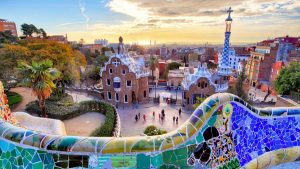
If you’ve been wondering whether to go to the Hungarian capital, you should know that:
Budapest is worth visiting for the mighty Danube River, the unparalleled Ruin Bars, the majestic Parliament Building, and for being the Spa Capital of the World. Adventure seekers will love its underground caves, temple explorers – the Great Synagogue, and foodies – the country’s delicious cuisine.
In this guide, you’ll discover 33 reasons to visit Budapest.
From flabbergasting architecture to centuries-old bridges, and from peculiar funiculars to staggering castles, you’ll have the time of your life in Hungary’s capital.
Put your travel belts on, and let’s dive right in!
Start Planning Your Trip to Budapest with Our BEST Recommendations:
⭐ Top Tours in Budapest ⭐
📍 Budapest Grand Tour – the highlights of Buda and Pest, including the Parliament.
📍 Danube Cruise with Prosecco – unlimited prosecco and Budapest at night.
⭐ Best Accommodations in Budapest ⭐
🏨 Monastery Boutique Hotel Budapest – our top pick near Buda’s main attractions.
🏨 Bohem Art Hotel – this funky, hip hotel has the vibe of an art gallery.
⭐ Easiest Transportation Options in Budapest ⭐
🚍 Budapest Card – enjoy discounts, free travel, and entrances to museums.
🚍 Discover Cars – compare and find the best rates for car rentals.
✅ Note: This article contains affiliate links. In case you purchase something through one of these links, we may receive a small commission at no extra cost to you. Thank you for helping us keep creating the free content on this website!
Go to Budapest for Its Gorgeous Attractions
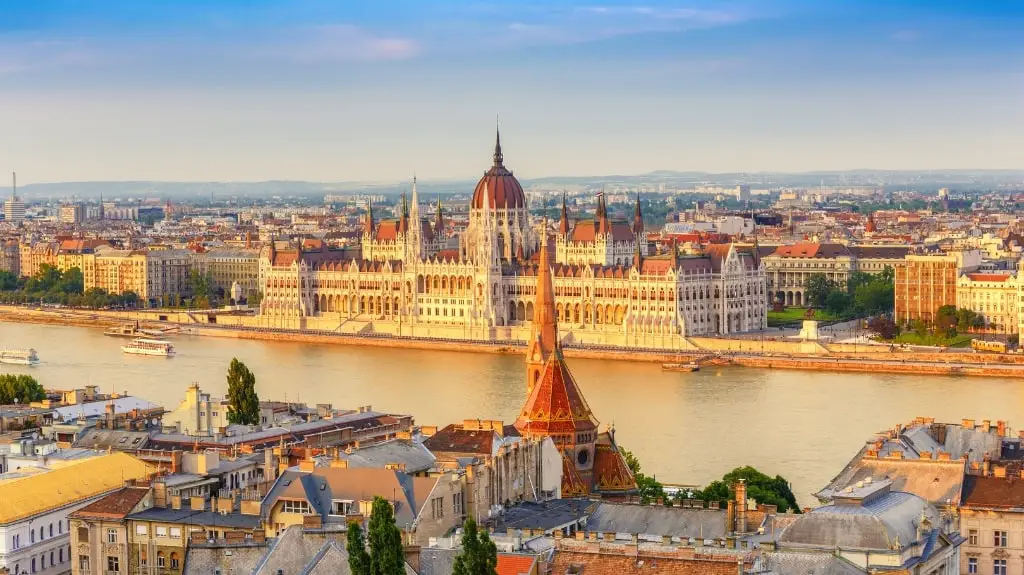
The biggest city in Hungary will enchant you with its numerous charms. The section below will walk you around the landmarks that make Budapest worth visiting.
- The Hungarian Parliament. The third-biggest national assembly in the world is one of the top reasons to visit Budapest. The staggering House of Parliament is also the largest Hungarian edifice and covers around 194,000 sq. ft. (18,000 sq. m). Three different architectural styles – Renaissance, Baroque, and Neo-Gothic – further amplify the splendor of the stunning parliamentary building. Explore the landmark on this excellent city tour that includes a visit to the assembly.
- Hungarian State Opera House. Emperor Franz Joseph commissioned the Hungarian Opera House. It opened to the public in 1884. The magnificent auditorium can hold up to 1,200 spectators that are often in awe due to the excellent acoustics of the opera house. Don’t have time to watch an opera performance? Admire the building’s opulence on this e-bike guided tour.
- The Chain Bridge. The city’s most popular bridge is one of the best things Budapest is famous for. The 19th-century suspension structure links Buda with Pest – the city’s west and east sides. It won’t take you more than 10 minutes to cross the ornate Chain Bridge, but the panoramas of the Danube River are to die for.
- Heroes’ Square (Hosök Tere). The statue of Archangel Gabriel, holding the Hungarian crown. The Millennium Monument that depicts the Seven Chieftains. These are just two of the things you can discover at Heroes’ Square. Other attractions in the square area that deserve your attention are the Palace of Art (Műcsarnok) and the Museum of Fine Arts.
- Hungarian National Museum. Many excellent collections that display art, war, crafts, religion, and archaeological pieces await you at the Hungarian National Museum. The Neoclassical edifice is a great example of the cultural heritage of Budapest. A famous meeting place for locals is the museum’s captivating garden.
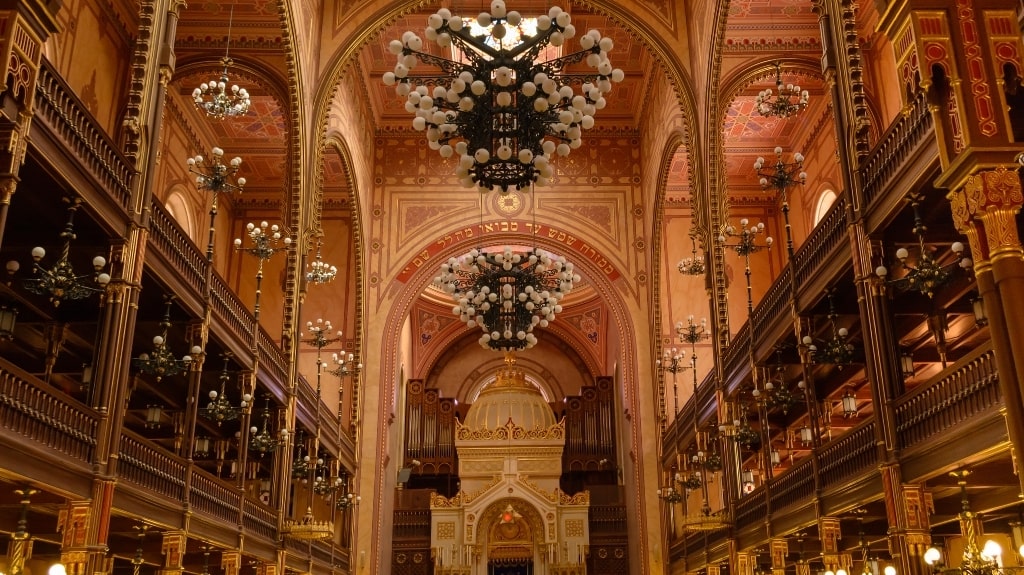
- Dohány Street Synagogue. Welcome to the largest synagogue in the world outside of Israel. Also popular as the Great Synagogue, the Dohány Street Synagogue was completely refurbished in the 1990s. The religious temple was erected in the Moorish Revival style, taking after the renowned Alhambra Palace in Spain. Skip the line by getting your ticket in advance from this link.
- Buda Castle. As a former palace of Hungarian royalty, Buda Castle is one of Budapest’s most distinct buildings. You can find the gorgeous edifice on Castle Hill. Originally constructed in the 13th century, authorities added the Baroque structures to the palatial complex five centuries later. Today, the Buda Castle is home to the Budapest History Museum and the Hungarian National Gallery.
- The Buda Castle Hill Funicular. The world’s second-oldest chain railway is the Buda Castle Funicular. Operational since 1870, it’s the quickest and best way to climb Castle Hill and admire the stupefying vistas of the Danube River. Wanna know one of the most peculiar Budapest facts? In 1988, the local government slowed down the funicular so that passengers can enjoy the views for longer.
- St. Stephen’s Basilica. This Roman Catholic basilica bears the name of the first King of Hungary – Stephen I. Inside the reliquary, you can find the right hand of King Stephen. Today, the temple is the third-largest church in the country. The basilica’s architectural style is Neo-Classical, with a Greek cross ground plan. St Stephen’s teems with fine arts and mosaics, which you’ll find by exploring the stunning interior. For the ultimate seduction, enjoy a classical music concert inside the basilica.
- House of Terror. This dark museum is among the main tourist landmarks in the Hungarian capital. The House of Terror is an abhorrent display of the country’s history. The building is where the Nazi and Soviet regimes tortured and killed thousands of people. The word “TERROR” hangs above the entrance in gigantic letters, preparing you for what you’re about to discover. Get this excellent guided tour if you’re curious to explore the House of Terror.
- The Fisherman’s Bastion. Feel like climbing? Head to the Fisherman’s Bastion where stupendous vistas of Budapest will blow your mind. The 19th-century citadel boasts seven towers with turrets that represent the Seven Tribes of the Magyars. From the top, you can ponder at Pest, the Danube River, and Margaret Island.
Visit Budapest to Taste Its Mouthwatering Dishes

If you’re a foodie, the Hungarian capital will live up to all your gourmet desires. Grab a napkin as in this section, you’ll be salivating over the foods and drinks that make Budapest worth visiting.
- Beef goulash. This heavenly stew of meat, vegetables, and lots of paprika is the most famous Hungarian dish. The deliciousness dates back to medieval times, and nowadays, it has several variations. While exploring Budapest, we suggest you try the traditional beef goulash that will catapult your palate into the seventh culinary heaven.
- Paprikás. A curious fact about Hungary is that the average person eats more than 1.1 lbs. (0.5 kg) of paprika each year. That’s why it shouldn’t surprise anyone that chicken paprikás is among the most revered dishes in Hungary. The spicy meal is one of the foods that make Budapest worth visiting, so don’t miss a chance to taste it.
- The legendary Budapest confectionery. Sisi – the famous Queen of Hungary and Empress of Austria – relished in spearmint candy. Well, in Budapest, you can still try her favorite sweets. Among other sugary temptations, you can find Sisi’s desired candy in Budapest’s oldest confectionery – Ruszwurm. Prepare yourself for a decadent world of sweet delights.
- Strudel. This mouthwatering filo pastry finds its origins in Vienna, but it quickly spread to neighboring countries. In Budapest, you can try as many strudel variations as you can imagine. Interestingly, Hungarians love equally the sweet and the savory versions. The savory variation usually features cabbage. The sweet options include fillings as diverse as plums, cheese, cherries, apricots, poppy seeds, custard cream, and traditional apples.
- The excellent Hungarian wines. If you have the time, definitely go to a wine bar. Hungarian wines pride themselves on world fame. A testament to that is the annual Budapest wine festival that honors their quality. It’s not difficult to guess why the capital city is so popular for wine-making. It sits next to Hungary’s best wine regions – Eger, Somló, and Tokaj.
Discover Budapest for Its One-of-a-kind Locations
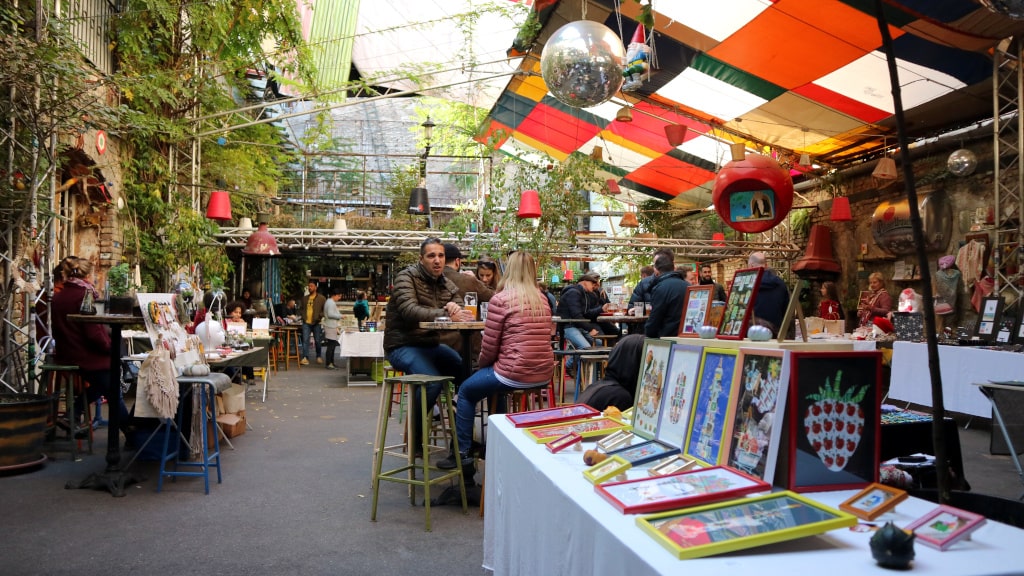
Life is booming on every Budapest corner. In the section below, you’ll explore the unique locations that make Budapest worth visiting.
- The Ruin Bars. When it comes to culture and lifestyle, Budapest’s primary attraction is the so-called “Ruin Bars” in the Jewish Quarter. They’re also why tourists choose the neighborhood as one of the best areas to stay in Budapest for nightlife. The majority of these upbeat locations are forsaken buildings that have been repurposed to serve as bars. Wanna know the coolest part? No two pubs are alike. Once in the Jewish Quarter, a must-stop place is the renowned Szimpla Kert.
- The underground caves. One of the best things Budapest is worth visiting is the maze of gigantic caves underneath its streets and buildings. In fact, the city is the only capital worldwide where you can find an underground cave system. The maze consists of over 200 caves. The most popular include the Buda Castle Labyrinth, the Pálvölgyi Cave, and the Szemlő Mountain Cave
- Széchenyi Thermal Baths. Budapest is known as the “Spa Capital of the World”. Széchenyi Thermal Baths defend this title. The center is the largest bath complex with medical facilities in Europe. The water in the swimming pools at Széchenyi abounds in calcium, bicarbonate, fluoride, and magnesium – all of which are essential minerals for your body and well-being. Everything from saunas and thermal basins to outdoor hot water pools is there to spoil you. So, don’t miss a chance to visit the spa complex.
- Gellért Baths. As we’re on the topic of Budapest’s rich spa traditions, we shouldn’t forget Gellért Baths. Among the numerous recreational facilities, the must-visit spots are the Finnish sauna and the fantastic open-air pool. After the 2008 renovations of the 1918 Art-Nouveau complex, the structure is back to its former splendor. Click here to book your unforgettable spa day at Gellért Baths.
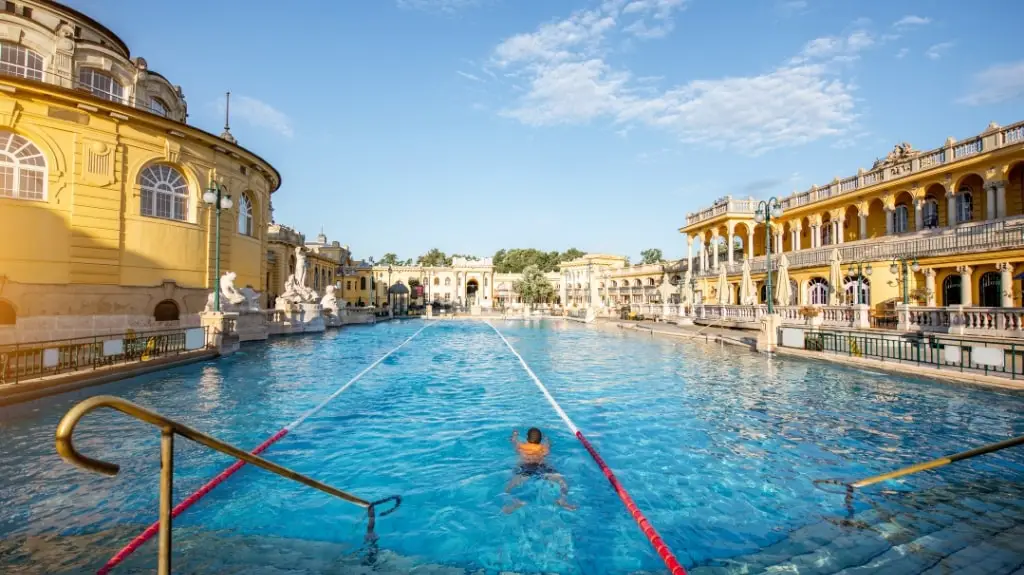
- The cave chapel. Among the most interesting spots in Budapest is Gellért Hill Cave. Its Hungarian name Sziklatemplom translates as “rock church”. Pauline monks sanctified the holy place in the 1920s. This cave chapel was first a monastery. During the Second World War, it served as a field hospital.
- Ecseri Flea Market. Love making good deals? Head to Ecseri Flea Market where hundreds of bargains await you. However, bear in mind the marketplace is one of Budapest’s busiest spots. At Ecseri, you’ll find everything from souvenirs and decorative pieces to memorabilia and hundreds of other attention-grabbing items.
- The islands in the Danube River. Margaret Island is the biggest island in the Danube River that belongs to Budapest. The other six are Csepel Island, Háros-sziget, Molnár-sziget, Népsziget, Palotai-sziget, and Shipyard Island. Locals created Margaret Island by joining three smaller islands in the 1890s. Originally, the plan was to control the flow of the river. But later, Margaret Island turned into a landmark. Locals and tourists alike visit it for the island’s park alleys, recreational areas, sports facilities, and the biggest open-air swimming complex in Budapest – Palatinus Water Park. Enjoy many of Budapest’s islands, including Margaret, on this excellent candlelit dinner river cruise with live music.
- The Budapest Eye Ferris wheel. With its imposing 213 ft. (65 m) in height, the Budapest Eye will take your breath away. The vistas from the top include the majestic St. Stephen’s Basilica, the mighty meanders of the Danube River, the gorgeous Fisherman’s Bastion, and the massive Buda Castle. Budapest’s Ferris wheel is a site to behold even from a distance, and you can do that by joining this guided tour we recommend.
- Central Market Hall. Nagy Vásárcsarnok is the Central Market Hall of Budapest. The most popular marketplace in the city attracts you with a wide variety of foods, spices, and memorabilia. The neo-Gothic architectural style is almost as impressive as the scale of the market hall, and it’s an unmistakable part of the city’s image.
Explore Budapest to Learn All About Its Peculiar Facts
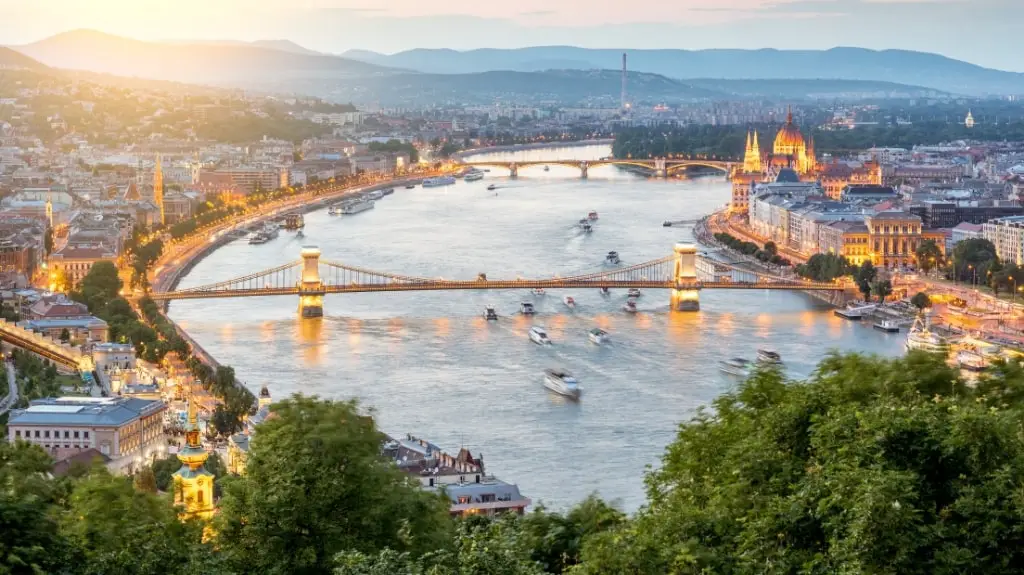
The history of the Hungarian capital teems with crazy facts. From its peculiar past to weird height restrictions, let’s discover all the facts that make people visit Budapest.
- Buildings’ height is limited. The Hungarian Parliament and St. Stephen’s Basilica both measure 96 m (314 ft.) in height. This sets a limit, which newly-erected buildings shouldn’t surpass. The exact number of 96 meters might seem random, but it refers to the year 896 – when Hungary was founded.
- The nicknames of Budapest. The Queen of the Danube is Budapest’s most popular nickname. The city deserves it for its majestic vistas over the Danube River and the stunning UNESCO World Heritage Sites. The list of monikers also includes The Capital of Spas, the Heart of Europe, and the Capital of Freedom.
- Europe’s second-oldest metro system. Budapest Metro is not only Europe’s second-oldest. It’s also the world’s third-oldest. Incepted in 1896, only the underground systems in London and Chicago precede it. Interestingly, the M1 subway line in Budapest currently belongs to the World Heritage Sites list of UNESCO.
- The thousands of bullet holes. Pay close attention to the walls of the buildings when you’re walking around Budapest’s streets. Many of them have bullet holes. This is a consequence of the 1965 revolution, which tried to end the communist regime. It resulted in violent and protracted battles. The still-visible bullet holes represent a dark reminder of Budapest’s grim past.
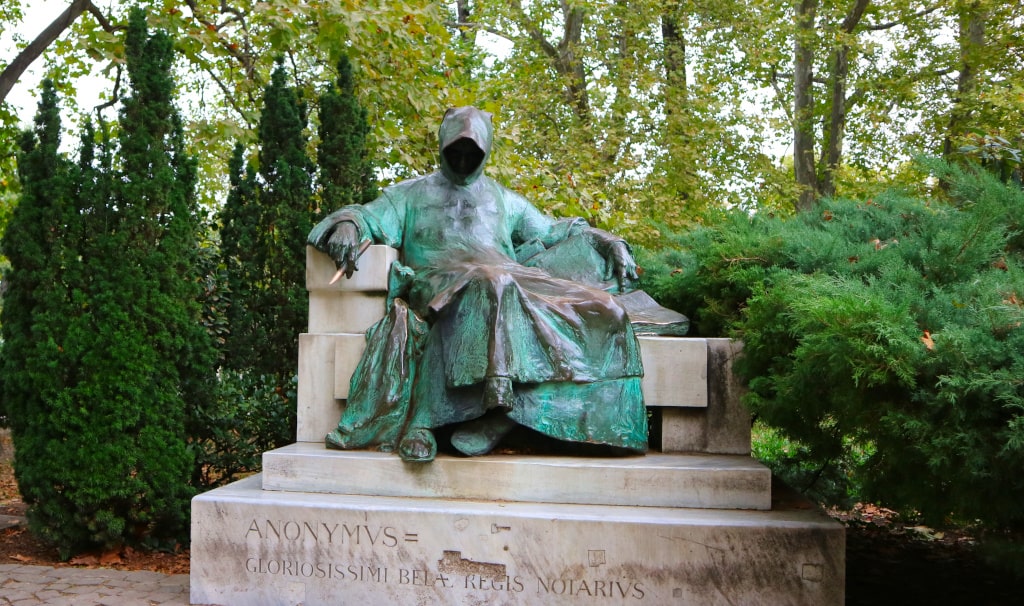
- Budapest – what’s behind its name? The story of where the city’s name stems from is very interesting. Three cities merged to create what’s today the Hungarian capital. In 1873, Buda, Pest, and Óbuda officially became one city. It bears the name of the first two – Buda and Pest. Nowadays, eight eye-catching bridges connect the former three cities.
- The northernmost holy place for Muslims. During the 16th century, the Turkish dervish Gül Baba resided in the Hungarian capital. He decided to live in Hungary after the Ottoman invasion of Europe ended. Gül Baba received a sacred status post-mortem. You can find his tomb in Buda, which is a holy location for followers of Islam.
- Become a great writer in Budapest? The statue of the Anonymous Notary of King Bela is a curious landmark in the city. The notary might be anonymous, but there’s a curious myth that surrounds the king’s monument. According to the legend, anyone who touches the pen that King Bela holds will immediately gain excellent writing skills. We might or might not have touched it.
- The celebrities of the Hungarian capital. Gorgeous Budapest is worth visiting for more than its amazing landmarks and pampering spa centers. Several famous folks resided there. László Bíró, the creator of the ballpoint pen, was born in Budapest in 1899. The inventor of the Rubik’s Cube – Erno Rubik – is another of the city’s celebrities. Harry Houdini (born Erik Weisz) – the master of illusion and deception – was also born in Budapest.
Is Budapest Worth Visiting: This Article Just Answered Your Question
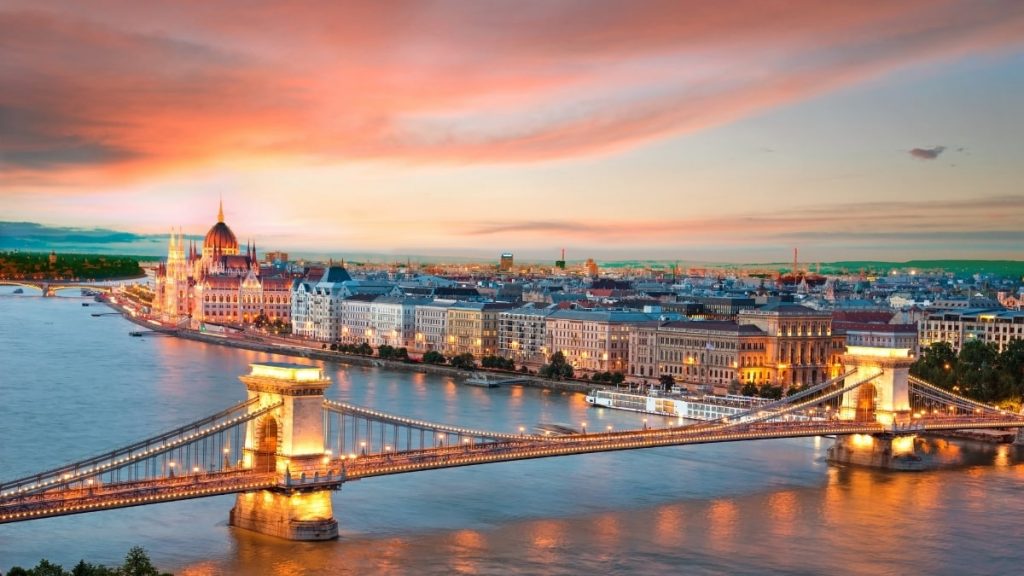
Our list of 33 cool reasons to visit Budapest has come to an end.
One of the world’s most gorgeous capitals and its numerous museums, attractions, and dishes will ensure your stay in the city is unforgettable.
Armed with this guide and our Budapest travel tips, we bet you’ll make the most of your trip.
Start Planning Your Trip to Budapest with Our BEST Recommendations:
⭐ Top Tours in Budapest ⭐
📍 Budapest Grand Tour – the highlights of Buda and Pest, including the Parliament.
📍 Danube Cruise with Prosecco – unlimited prosecco and Budapest at night.
⭐ Best Accommodations in Budapest ⭐
🏨 Monastery Boutique Hotel Budapest – our top pick near Buda’s main attractions.
🏨 Bohem Art Hotel – this funky, hip hotel has the vibe of an art gallery.
⭐ Easiest Transportation Options in Budapest ⭐
🚍 Budapest Card – enjoy discounts, free travel, and entrances to museums.
🚍 Discover Cars – compare and find the best rates for car rentals.
Before you leave, please share with us:
Do you think Budapest is fun to visit?
Tell us in the comments below.




